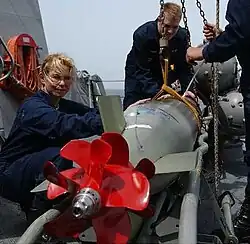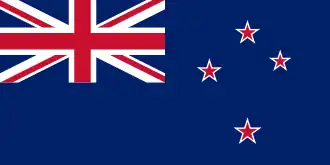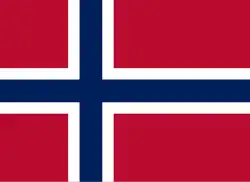Mark 46 torpedo
| Mark 46 torpedo | |
|---|---|
A Mk 46 exercise torpedo launched from USS Moosbrugger. | |
| Type | Lightweight anti-submarine torpedo[1] |
| Place of origin | United States |
| Service history | |
| In service | • Mod 0: 1963[1] • Mod 5: 1979 |
| Used by | See operators |
| Production history | |
| Designer | Naval Ordnance Test Station Pasadena[1] Aerojet[1] Alliant Techsystems |
| Designed | 1960[1] |
| Manufacturer | Aerojet[1] Naval Ordnance Station Forest Park Honeywell Raytheon[2] |
| Variants | Mod 0[1] Mod 1 Mod 2 Mod 5 Mod 5A Mod 5A(S) Mod 5A(SW)[2] |
| Specifications | |
| Mass | 508 lb (230 kg) |
| Length | 8 ft 6 in (2.59 m) |
| Diameter | 12.75 in (323.8 mm) |
| Warhead | PBXN-103 high explosive (bulk charge) |
| Warhead weight | 96.8 lb (43.9 kg) |
| Engine | Two-speed, reciprocating external combustion |
| Propellant | Otto fuel II |
Operational range | 12,000 yd (11,000 m) |
| Maximum depth | >1,200 ft (370 m) |
| Maximum speed | >40 kn (74 km/h; 46 mph) |
Guidance system | Active or passive/active acoustic homing |
Launch platform | Mark 32 Surface Vessel Torpedo Tubes, ASW Aircraft, RUM-139 VL-ASROC |
The Mark 46 torpedo is the backbone of the United States Navy's lightweight anti-submarine warfare torpedo inventory and is the NATO standard. These aerial torpedoes are designed to attack high-performance submarines. In 1989, an improvement program for the Mod 5 to the Mod 5A and Mod 5A(S) increased its shallow-water performance. The Mark 46 was initially developed as Research Torpedo Concept I (RETORC I), one of several weapons recommended for implementation by Project Nobska, a 1956 summer study on submarine warfare.[3]
-
 A Mark 46 Mod 5A torpedo is inspected aboard the guided missile destroyer USS Mustin.
A Mark 46 Mod 5A torpedo is inspected aboard the guided missile destroyer USS Mustin. -
 A French Lynx helicopter carrying a Mk 46 torpedo.
A French Lynx helicopter carrying a Mk 46 torpedo. -
A P-8A Poseidon of VP-16 dropping a Mark 46 torpedo
Design details
Variants
- Mod 0: One of the original versions of 1960 (production started 1963). Solid propellent piston engine. Gyro/wire guidance with passive/active homing.[1]
- Mod 1: Based on Mod 0. 1967. Uses liquid Otto fuel piston engine. Laminar search guidance.[1] Phase 1 of 1968 uses stronger hull to resist deeper waters. Phase 2 of 1971 uses a new homing program able to detect submarines near the surface.[4]
- Mod 2: Based on Mod 1 phase 2. More powerful Mk 103 Mod 1 warhead. Improved computer with snake search pattern capability.[4] Known to have been captured by China in 1978.[5]
- Mod 4: Version for use as Mark 60 CAPTOR mine payload.[6][7]
- Mod 5: 1979 upgrade kit for Mod 2, also known as NEARTIP (near-term improvement program). New passive/active sonar, liquid fuel and two speed engine for low speed search and high speed attack.[4]
- Mod 5A: Cheaper NEARTIP upgrade kit for Mod 1 and Mod 2 with improved shallow-water performance. 1980s.[4]
- Mod 5A(S): Variant of 5A that allows use in water as shallow as 40 m.[4]
- Mod 5A(SW): Latest variant from 1996 Service Life Extension Program.[4] Boasts improved counter-countermeasure performance, enhanced target acquisition, provides a bottom-avoidance preset, and improved maintainability and reliability.[2]
- Mod 6: Version for Mark 60 CAPTOR, with some NEARTIP components.[6]
- Mod 7: Cancelled. Not funded by Congress.[8]
For most variants there is also an inert REXTORP (recoverable exercise torpedo) version.
Specifications
- Mark 46, Mod 5
- Primary Function: Air and ship-launched lightweight torpedo[9]
- Contractor: Alliant Techsystems
- Power Plant: Two-speed, reciprocating external combustion; Mono-propellant (Otto fuel II)
- Length: 8 ft 6 in (2.59 m) tube launch configuration (from ship),[10] 14 ft 9 in (4.50 m) with ASROC rocket booster[9]
- Weight: 508 lb (230 kg)[9] (warshot configuration)
- Diameter: 12.75 in (324 mm)[10]
- Range: 12,000 yd (11,000 m)[9]
- Depth: > 1,200 ft (370 m)
- Speed: > 40 kn (74 km/h; 46 mph)[9]
- Guidance System: Homing mode: Active or passive/active acoustic homing[10]
- Launch/search mode: Snake or circle search
- Warhead: 96.8 lb (43.9 kg)[9] of PBXN-103 high explosive (bulk charge)
- Date Deployed: 1967 (Mod 0);[9] 1979 (Mod 5)
Yu-7 variant
The Chinese Yu-7 torpedo is said to be based on the Mk 46 Mod 2. The Chinese Navy used the Yu-7 ASW torpedo, deployed primarily on ships and ASW helicopters,[11] but it started to be replaced by the Yu-11 in 2012.[5]
Operators
.svg.png) Australia
Australia Bahrain
Bahrain.svg.png) Belgium
Belgium Brazil
Brazil.svg.png) Canada
Canada Chile
Chile Colombia
Colombia Croatia
Croatia Ecuador
Ecuador Egypt
Egypt France
France Germany
Germany Greece
Greece Indonesia
Indonesia Iran
Iran Israel
Israel Italy
Italy Japan
Japan Kuwait
Kuwait Mexico
Mexico Morocco
Morocco Netherlands
Netherlands New Zealand
New Zealand Norway
Norway Pakistan
Pakistan Peru
Peru Philippines[12]
Philippines[12].svg.png) Portugal
Portugal Saudi Arabia
Saudi Arabia South Korea
South Korea Spain
Spain Taiwan
Taiwan Thailand
Thailand Turkey
Turkey United Arab Emirates
United Arab Emirates United Kingdom
United Kingdom United States[13]
United States[13]
See also
- Advanced Light Torpedo Shyena
- CAPTOR mine (a sea mine which incorporates a Mk 46 torpedo)
- MU90 Impact torpedo
- Mark 50 torpedo
- Mark 54 MAKO Lightweight Torpedo
- Stingray torpedo
References
- ^ a b c d e f g h i Jolie, E.W. (15 September 1978). "A Brief History of US Navy Torpedo Development: Torpedo Mk46". Retrieved 24 June 2013.
- ^ Friedman, Norman (1994). U.S. Submarines Since 1945: An Illustrated Design History. Annapolis, Maryland: Naval Institute Press. pp. 109-114. ISBN 1-55750-260-9.
- ^ a b c d e f "Mk 46". Weaponsystems.net.
- ^ a b "Undersea dragon: Chinese ASW capabilities advance" (PDF). Jane's. 2017. Retrieved 23 July 2019.
- ^ a b "Mark 60 CAPTOR". Weaponsystems.net.
- ^ Simeral, R. T. (1978). "Torpedo MK 46 Physical Characteristics". Naval Ocean Systems Center, San Diego, CA.; Government-Industry Data Exchange Program. ADA081111.pdf
- ^ "MK-46 Torpedo". www.navysite.de.
- ^ a b c d e f g Thomas, Vincent C. The Almanac of Seapower 1987 Navy League of the United States (1987) ISBN 0-9610724-8-2 pp.190-191
- ^ a b c Polmar, Norman "The Ships and Aircraft of the U.S. Fleet: Torpedoes" United States Naval Institute Proceedings November 1978 p.160
- ^ (Chinese language) Archived 2006-11-02 at the Wayback Machine
- ^ "Frigate Lot 3A - Torpedoes Acquisition Project of the Philippine Navy". www.phdefenseresource.com. 3 April 2021.
- ^ "Mk 46 torpedo - Weaponsystems.net". www.weaponsystems.net.